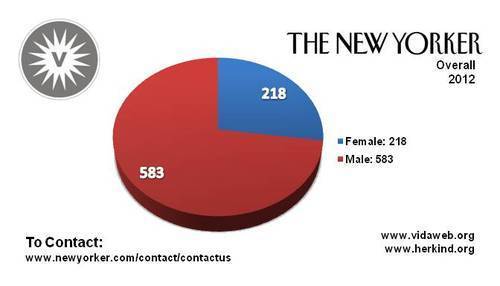Charissa Cotrill's Blog, page 96
March 6, 2013
thund3r-pussy:
disp0sableheroes:
bludge0n:
a-wh0re-t0-remember...

His sign is too correct for me not to reblog.
THIS
As someone who was raised Catholic, I can honestly say, God prefers nice atheists to asshole Christians.
I’m a Christian, and I agree. Not all Christians are nice or worthy. Anyone can be a good person.
March 5, 2013
pol102:
Via newsweek:
From wbez:
verosays:
This is what...

Via newsweek:
From wbez:
This is what structural racism looks like.
Chicago, we have to do better.
Media criticism done on a napkin.
wilwheaton:
kat-howard:
elysemarshall:
annajarzab:
I like...

I like this.
I like this, too.
Wonderful. I want to memorize this.
This is amazing.
neurosciencestuff:
Pain from the brain: Study reveals how...

Psychogenic diseases, formerly known as ‘hysterical’ illnesses, can have many severe symptoms such as painful cramps or paralysis but without any physical explanation. However, new research from the University of Cambridge and UCL (University College London) suggests that individuals with psychogenic disease, that is to say physical illness that stems from emotional or mental stresses, do have brains that function differently. The research was published today, 25 February, in the journal Brain.
Psychogenic diseases may look very similar to illnesses caused by damage to nerves, the brain or the muscles, or similar to genetic diseases of the nervous system. However, unlike organic diseases, psychogenic diseases do not have any apparent physical cause, making them difficult to diagnose and even more difficult to treat.
“The processes leading to these disorders are poorly understood, complex and highly variable. As a result, treatments are also complex, often lengthy and in many cases there is poor recovery. In order to improve treatment of these disorders, it is important to first understand the underlying mechanism,” said Dr James Rowe from the University of Cambridge.
The study looked at people with either psychogenic or organic dystonia, as well as healthy people with no dystonia. Both types of dystonia caused painful and disabling muscle contractions affecting the leg. The organic patient group had a gene mutation (the DYT1 gene) that caused their dystonia. The psychogenic patients had the symptoms of dystonia but did not have any physical explanation for the disease, even after extensive investigations.
The scientists performed PET brain scans on the volunteers at UCL, to measure the blood flow and brain activity of both of the groups, and healthy volunteers. The participants were scanned with three different foot positions: resting, moving their foot, and holding their leg in a dystonic position. The electrical activity of the leg muscles was measured at the same time to determine which muscles were engaged during the scans.
The researchers found that the brain function of individuals with the psychogenic illness was not normal. The changes were, however, very different from the brains of individuals with the organic (genetic) disease.
Dr Anette Schrag, from UCL, said: “Finding abnormalities of brain function that are very different from those in the organic form of dystonia opens up a way for researchers to learn how psychological factors can, by changing brain function, lead to physical problems.”
Dr Rowe added: “What struck me was just how very different the abnormal brain function was in patients with the genetic and the psychogenic dystonia. Even more striking was that the differences were there all the time, whether the patients were resting or trying to move.”
Additionally, the researchers found that one part of the brain previously thought to indicate psychogenic disease is unreliable: abnormal activity of the prefrontal cortex was thought to be the hallmark of psychogenic diseases. In this study, the scientists showed that this abnormality is not unique to psychogenic disease, since activity was also present in the patients with the genetic cause of dystonia when they tried to move their foot.
Dr Arpan Mehta, from the University of Cambridge, said: “It is interesting that, despite the differences, both types of patient had one thing in common - a problem at the front of the brain. This area controls attention to our movements and although the abnormality is not unique to psychogenic dystonia, it is part of the problem.”
This type of illness is very common. Dr Schrag said: “One in six patients that see a neurologist has a psychogenic illness. They are as ill as someone with organic disease, but with a different cause and different treatment needs. Understanding these disorders, diagnosing them early and finding the right treatment are all clearly very important. We are hopeful that these results might help doctors and patients understand the mechanism leading to this disorder, and guide better treatments.”
March 4, 2013
mumblingsage:
kawabiala:
vintagegal:
“La Belle Dame sans...

“La Belle Dame sans Merci” by Frank Dicksee, 1902
This picture is fascinating to me because of its portrayal of a powerful female character who doesn’t fall into any of the typical modern ‘Strong Female Character’ cliches.
The woman is the powerful, sexually assertive and threatening figure here, while the man is the more passive figure, visibly vulnerable to her. However, this portrayal of a woman as assertive and powerful doesn’t rely either on sexualizing her or on presenting that power in masculine ways.
This Belle Dame is traditionally feminine, drawn in flowing lines and curves. She is sexually assertive but not sexualized. The man is armed, masculine, stiff and drawn in straight, square lines - all stereotypically masculine, but his body language and expression make it obvious that he is the submissive and less powerful party here. His vulnerability is not expressed by de-masculinizing him, just as her power is not shown by making her any less feminine.
Some modern artists could stand to take lessons from Mr Dicksee.
The way her small hands grip that warhorse’s reins with such perfect strength and control never ceases to amaze me.
wilwheaton:
laughterkey:
section9:
heistdoc:
The Results of...

The Results of Drug Tests on Welfare Recipients in Florida:
Drug testing only benefits the testing company. Typical on conservatives to waste time and money trying to stop a fake issue.
You have to love how they pander to the “everyone on welfare is a mooch and a druggie” types in order to get public support for such a wasteful program - that did nothing but line the pockets of the owners of drug testing facilities.
You know what would be really crazy? If the Governor who signed the law that introduced drug screening, founded one of the largest companies in Florida that provides drug screening.
Fucking Rick Scott.
Tea Party America, ladies and gentlemen. It’s crony capitalism at it’s finest, and the rubes who vote for these shitbags just clap louder and louder while people like Rick Scott fuck them over.
explore-blog:
Pie-charting the appalling gender imbalance of...







Pie-charting the appalling gender imbalance of the literary world. Podcasting and academia don’t fare any better.
Fifty years later, “the problem that has no name” has both a name and numbers, but little seems to have changed.
travellyr:
fuck-you-i-just:
uguuface:
Things like this make...






Things like this make me want to play dnd but the only groups I know here are super serious types who hate fun
I love people.
MASTERCARD
la-meilleure-amie:
Everyone SAYS they want a fairytale wedding but when I show up and curse their...
Everyone SAYS they want a fairytale wedding but when I show up and curse their...



